Recombinant Mouse Argininosuccinate synthase (Ass1)
In Stock-
中文名稱(chēng):Recombinant Mouse Argininosuccinate synthase(Ass1)
-
貨號(hào):CSB-EP002234MO
-
規(guī)格:¥2328
-
圖片:
-
其他:
產(chǎn)品詳情
-
純度:Greater than 85% as determined by SDS-PAGE.
-
基因名:Ass1
-
Uniprot No.:
-
別名:Ass1; AssArgininosuccinate synthase; EC 6.3.4.5; Citrulline--aspartate ligase
-
種屬:Mus musculus (Mouse)
-
蛋白長(zhǎng)度:Full Length
-
來(lái)源:E.coli
-
分子量:51.6 kDa
-
表達(dá)區(qū)域:1-412aa
-
氨基酸序列MSSKGSVVLAYSGGLDTSCILVWLKEQGYDVIAYLANIGQKEDFEEARKKALKLGAKKVFIEDVSKEFVEEFIWPAVQSSALYEDRYLLGTSLARPCIARRQVEIAQREGAKYVSHGATGKGNDQVRFELTCYSLAPQIKVIAPWRMPEFYNRFKGRNDLMEYAKQHGIPIPVTPKSPWSMDENLMHISYEAGILENPKNQAPPGLYTKTQDPAKAPNSPDVLEIEFKKGVPVKVTNIKDGTTRTTSLELFMYLNEVAGKHGVGRIDIVENRFIGMKSRGIYETPAGTILYHAHLDIEAFTMDREVRKIKQGLGLKFAELVYTGFWHSPECEFVRHCIQKSQERVEGKVQVSVFKGQVYILGRESPLSLYNEELVSMNVQGDYEPIDATGFININSLRLKEYHRLQSKVTAK
Note: The complete sequence may include tag sequence, target protein sequence, linker sequence and extra sequence that is translated with the protein sequence for the purpose(s) of secretion, stability, solubility, etc.
If the exact amino acid sequence of this recombinant protein is critical to your application, please explicitly request the full and complete sequence of this protein before ordering. -
蛋白標(biāo)簽:N-terminal 10xHis-tagged and C-terminal Myc-tagged
-
產(chǎn)品提供形式:Liquid or Lyophilized powder
Note: We will preferentially ship the format that we have in stock, however, if you have any special requirement for the format, please remark your requirement when placing the order, we will prepare according to your demand. -
緩沖液:If the delivery form is liquid, the default storage buffer is Tris/PBS-based buffer, 5%-50% glycerol. If the delivery form is lyophilized powder, the buffer before lyophilization is Tris/PBS-based buffer, 6% Trehalose.
-
復(fù)溶:We recommend that this vial be briefly centrifuged prior to opening to bring the contents to the bottom. Please reconstitute protein in deionized sterile water to a concentration of 0.1-1.0 mg/mL.We recommend to add 5-50% of glycerol (final concentration) and aliquot for long-term storage at -20°C/-80°C. Our default final concentration of glycerol is 50%. Customers could use it as reference.
-
儲(chǔ)存條件:Store at -20°C/-80°C upon receipt, aliquoting is necessary for mutiple use. Avoid repeated freeze-thaw cycles.
-
保質(zhì)期:The shelf life is related to many factors, storage state, buffer ingredients, storage temperature and the stability of the protein itself.
Generally, the shelf life of liquid form is 6 months at -20°C/-80°C. The shelf life of lyophilized form is 12 months at -20°C/-80°C. -
貨期:3-7 business days
-
注意事項(xiàng):Repeated freezing and thawing is not recommended. Store working aliquots at 4°C for up to one week.
-
Datasheet & COA:Please contact us to get it.
相關(guān)產(chǎn)品
靶點(diǎn)詳情
-
功能:One of the enzymes of the urea cycle, the metabolic pathway transforming neurotoxic amonia produced by protein catabolism into inocuous urea in the liver of ureotelic animals. Catalyzes the formation of arginosuccinate from aspartate, citrulline and ATP and together with ASL it is responsible for the biosynthesis of arginine in most body tissues.
-
基因功能參考文獻(xiàn):
- findings uncover a new function of p53 in the regulation of Akt signaling and reveal how p53, ASS1, and Akt are interrelated to each other. PMID: 28560349
- ASS1 acetylation by CLOCK exhibits circadian oscillation in human cells and mouse liver, possibly caused by rhythmic interaction between CLOCK and ASS1, leading to the circadian regulation of ASS1 and ureagenesis. PMID: 28985504
- In diabetic mice, ablation of Ass resulted in diminished endothelium-derived nitric oxide-mediated vascular relaxation responses. PMID: 25033204
- cAMP-induced Ass1 expression is important in controlling the magnitude of decidualization through regulating L-Arg level. PMID: 24556046
- may contribute to liver injury by enhancing nitrosative stress PMID: 24224890
- We demonstrate that the transgenic mouse system reported here has the merit of sensitivity and direct visualization advantage, and is ideal for annotating temporal and spatial expression profiles and the regulation mode of the ASS gene. PMID: 24884799
- Thus, extracellular arginine fuels rapid NO production in activated macrophages, and citrulline recycling via Ass1 and Asl is a fail-safe system that sustains optimum NO production. PMID: 22980328
- Partial argininosuccinate synthase ablation protects only in acute ethanol-induced liver injury by decreasing nitrosative stress but not in a more chronic scenario where oxidative stress and impaired fatty acid beta-oxidation are key events. PMID: 22213272
- Loss of Ass1 is associated with citrullinemia type I and other hyperammonemic syndromes. PMID: 20724589
- Argininosuccinate synthetase has a role in preventing autotoxicity from nitric oxide overproduction PMID: 15192091
顯示更多
收起更多
-
亞細(xì)胞定位:Cytoplasm, cytosol.
-
蛋白家族:Argininosuccinate synthase family, Type 1 subfamily
-
組織特異性:Widely expressed.
-
數(shù)據(jù)庫(kù)鏈接:
Most popular with customers
-
Recombinant Human R-spondin-1 (RSPO1), partial (Active)
Express system: Mammalian cell
Species: Homo sapiens (Human)
-
Recombinant Macaca fascicularis Membrane spanning 4-domains A1 (MS4A1)-VLPs (Active)
Express system: Mammalian cell
Species: Macaca fascicularis (Crab-eating macaque) (Cynomolgus monkey)
-
Recombinant Human Oncostatin-M (OSM), partial (Active)
Express system: Mammalian cell
Species: Homo sapiens (Human)
-
Recombinant Mouse CUB domain-containing protein 1 (Cdcp1), partial (Active)
Express system: Mammalian cell
Species: Mus musculus (Mouse)
-
Recombinant Human Killer cell immunoglobulin-like receptor 3DL2 (KIR3DL2), partial (Active)
Express system: Mammalian cell
Species: Homo sapiens (Human)
-
Recombinant Human Gastric inhibitory polypeptide receptor(GIPR),partial (Active)
Express system: Mammalian cell
Species: Homo sapiens (Human)
-
Recombinant Human Kidney-associated antigen 1(KAAG1) (Active)
Express system: Baculovirus
Species: Homo sapiens (Human)
-
Recombinant Human Tumor necrosis factor ligand superfamily member 15(TNFSF15) (Active)
Express system: Mammalian cell
Species: Homo sapiens (Human)

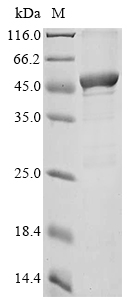

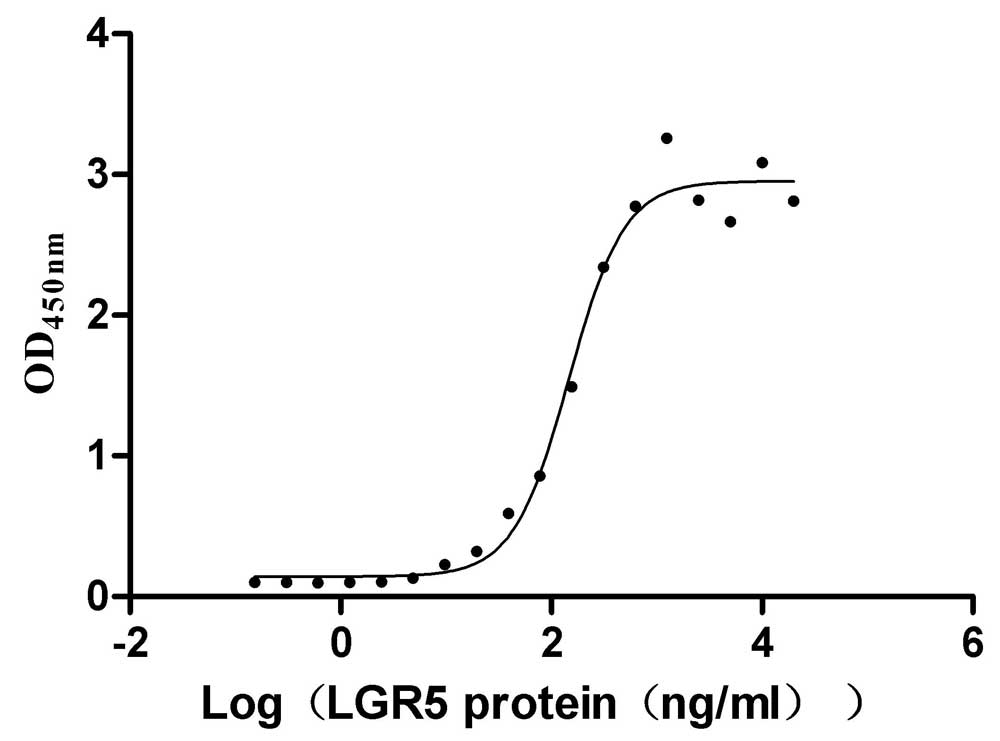
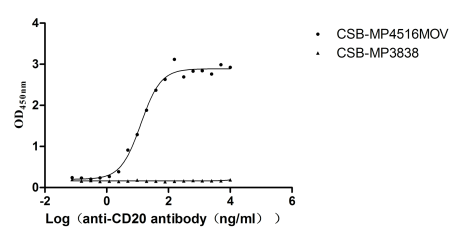
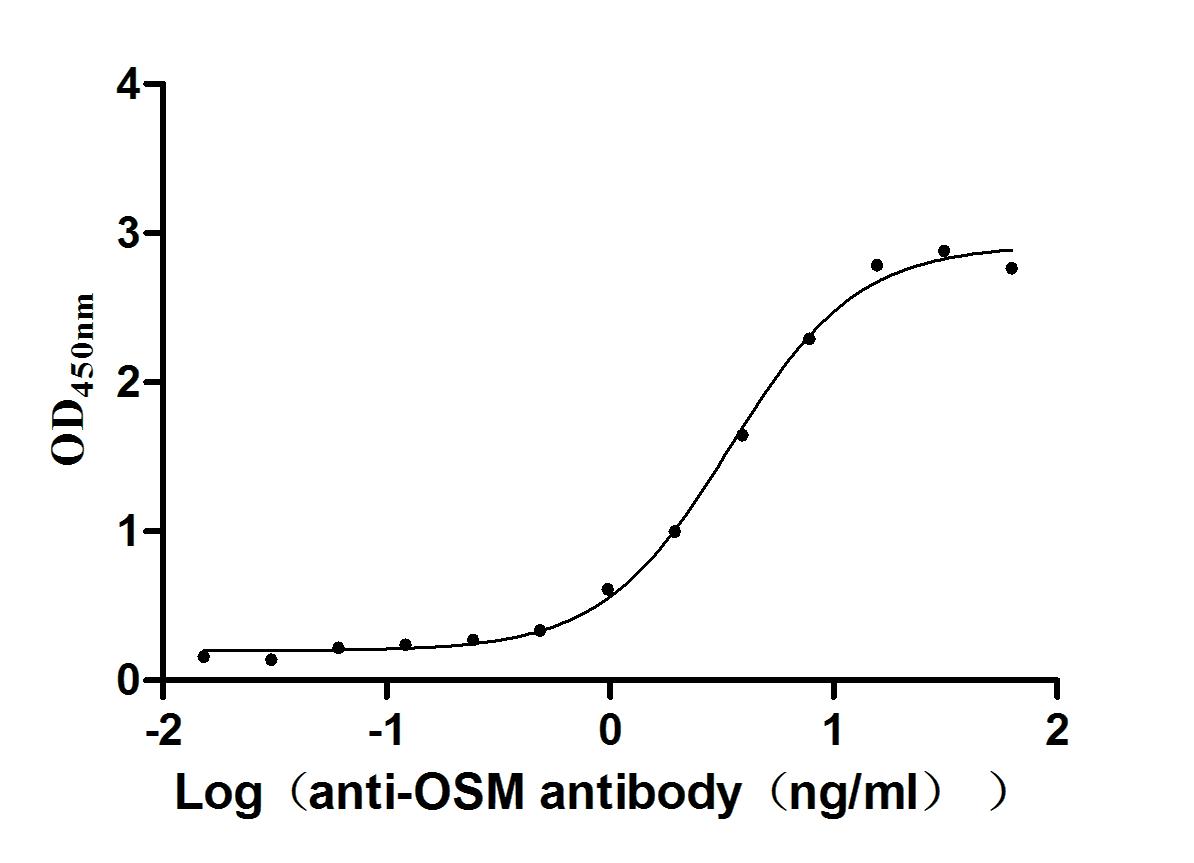
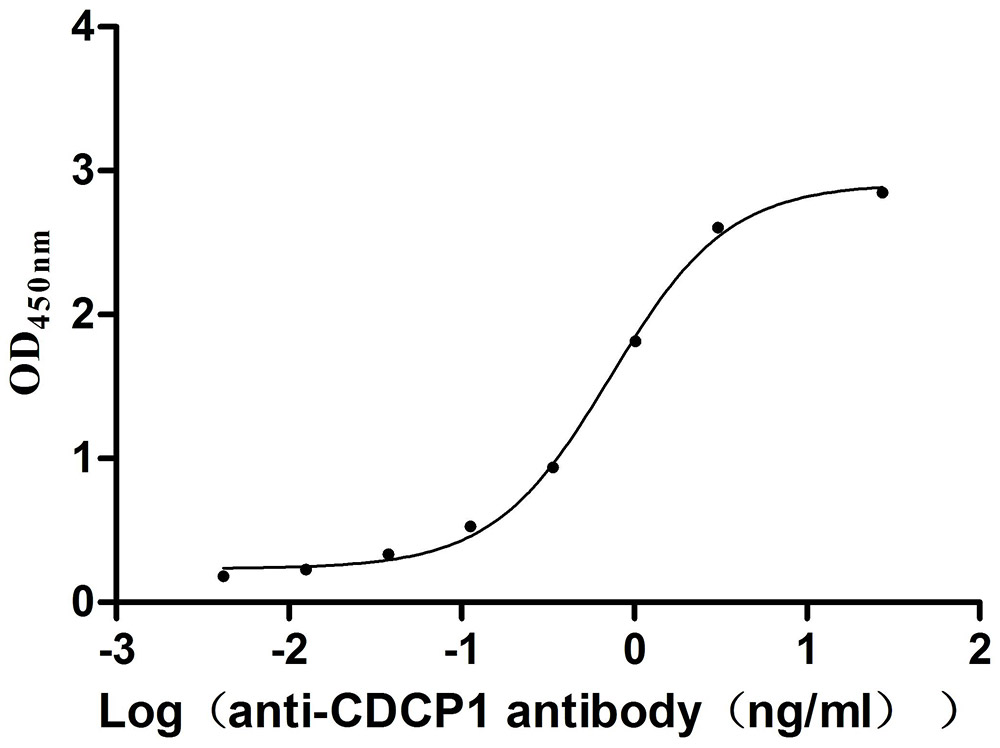

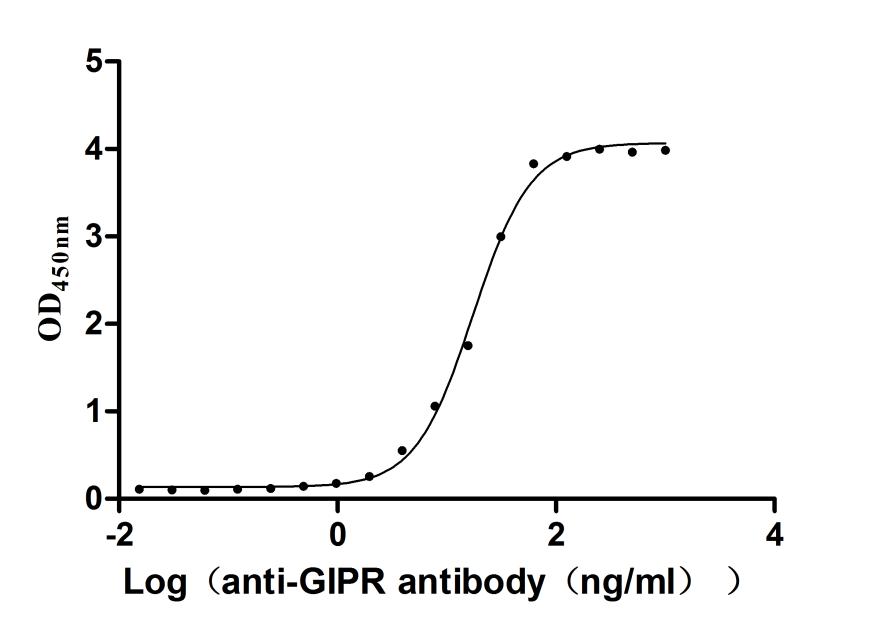
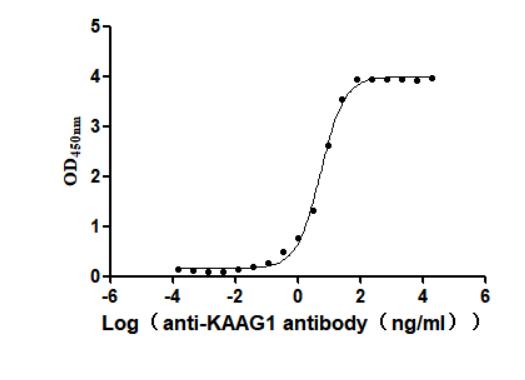
-AC1.jpg)









